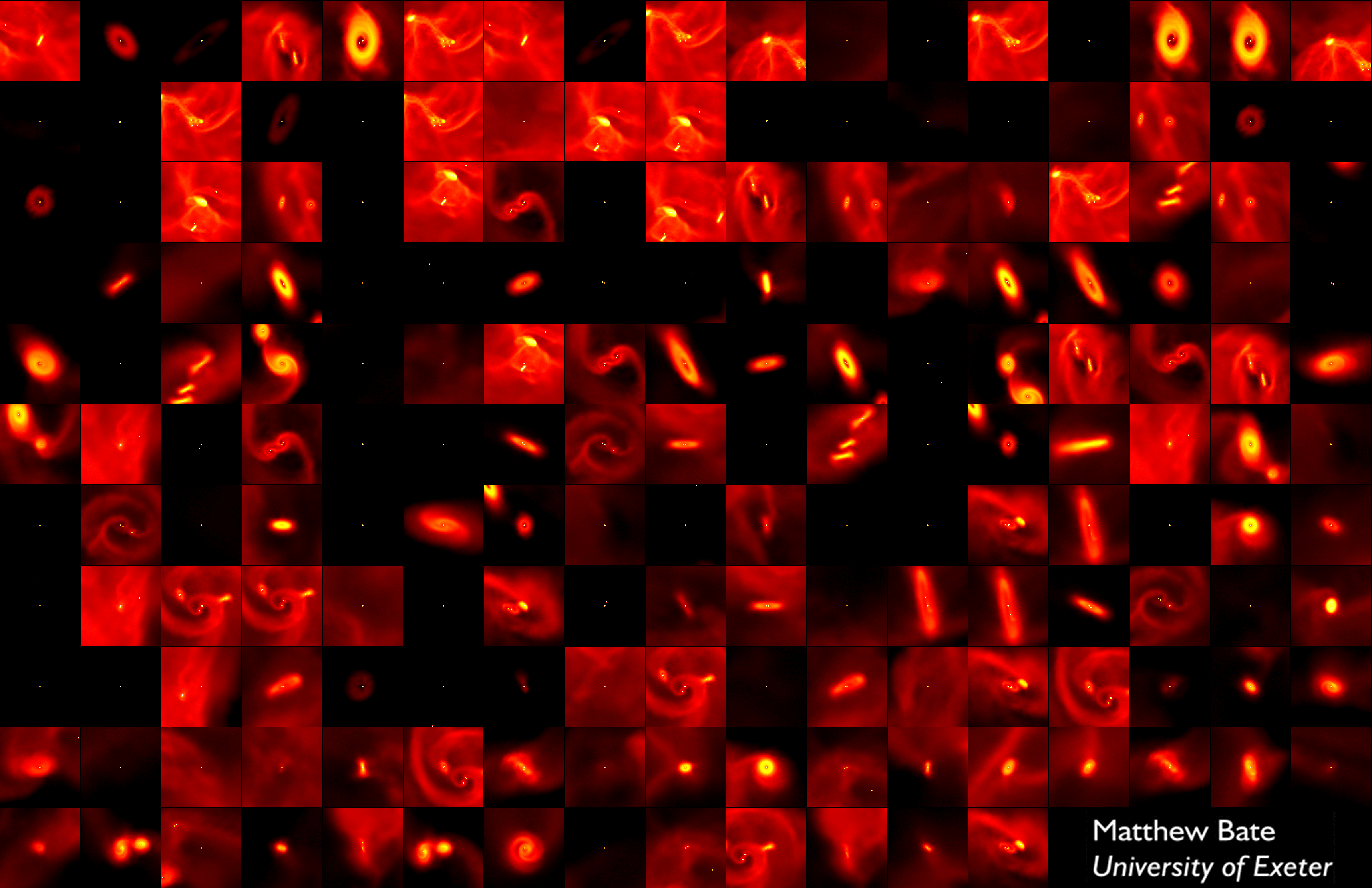On the diversity and statistical properties of protostellar discsMatthew R. Bate We present results from the first population synthesis study of protostellar discs. We analyse the evolution and properties of a large sample of protostellar discs formed in a radiation hydrodynamical simulation of star cluster formation (Bate 2012). Due to the chaotic nature of the star formation process, we find an enormous diversity of young protostellar discs, including misaligned discs, and discs whose orientations vary with time. Star-disc interactions truncate discs and produce multiple systems. Discs may be destroyed in dynamical encounters and/or through ram-pressure stripping, but reform by later gas accretion. We quantify the distributions of disc mass and radii for protostellar ages up to ≈ 105 yrs. For low-mass protostars, disc masses tend to increase with both age and protostellar mass. Disc radii range from of order ten to a few hundred AU, grow in size on timescales ≤ 104 yr, and are smaller around lower-mass protostars. The radial surface density profiles of isolated protostellar discs are flatter than the minimum mass solar nebula model, typically scaling as Σ ∝ r-1. Disc to protostar mass ratios rarely exceed two, with a typical range of Md/M* = 0.1-1 to ages ≤ 104 yrs and decreasing thereafter. We quantify the relative orientation angles of circumstellar discs and the orbit of bound pairs of protostars, finding a preference for alignment that strengths with decreasing separation. We also investigate how the orientations of the outer parts of discs differ from the protostellar and inner disc spins for isolated protostars and pairs. Refereed Scientific Papers
"On the diversity and statistical properties of protostellar discs" AnimationsSimulations & visualisations by Matthew Bate, University of Exeter unless stated otherwise. The protostellar discs that form and evolve in the radiation hydrodynamical calculation of stellar cluster formation (Bate 2012)The animation shows a mosaic of 183 animations, each of which displays a region with dimensions of 400x400 AU centred on one of the protostars (sink particles) that is produced during the simulation. The colour scale shows the logarithm of column density, ranging from 1 to 104 g cm-2. The protostars appear in the order in which the form in the radiation hydrodynamical simulation, and the animation runs from t=0.70-1.20 tff, which is a period of 95,000 yrs. The animation allows the evolution of each protostar and its disc to be followed. Two resolutions of the animation are available:
Low resolution (32MB, 1717x1111 pixels)
High resolution (264MB, 3434x2222 pixels)
Copyright: The material on this page is the property of Matthew Bate. Movies and images are released under a Creative Commons Attribution-Noncommercial-Share Alike 3.0 License.
Notes on formats: Technical Details
See the details of the star cluster formation calculation that was originally published in Bate (2012). Copyright: Matthew Bate, University of Exeter.
|

